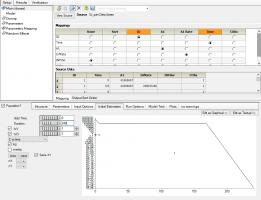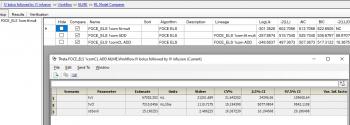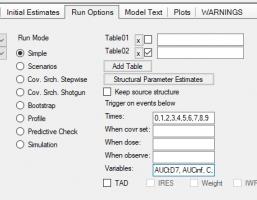Dear all,
Our drug was administered as a single IV bolus followed by constant rate IV infusion. The IV infusion started 30 min after the bolus injection and lasted 7-14 days (non-stop). PK samples were taken during the infusion and after the end of infusion.
The drug contains endogenous compound, thus, the observed concentration is a combination of our drug and the endogenous compounds. The concentration of the endogenous compound also varies over time (based on the data from the control group).
We tried to model the data as 1-compartment IV bolus + IV infusion (with lag time). The model text is shown below:
test(){
deriv(A1 = - (A1 * Ke))
urinecpt(A0 = (A1 * Ke))
C = A1 / V
dosepoint(A1, idosevar = A1Dose, infdosevar = A1InfDose, infratevar = A1InfRate)
dosepoint2(A1, tlag = (0.5), rate = (41666667))
error(CEps = 0.1)
observe(CObs = C * (1 + CEps))
stparm(V = tvV)
stparm(Tlag = tvTlag)
stparm(Ke = tvKe)
fixef(tvV = c(, 50000000, ))
fixef(tvTlag = c(, 0.5, ))
fixef(tvKe = c(, 0.000962777, ))
}
the initial estimates (tvK, tvV) came from the non-compartmental analysis of the plasma concentration time profile.
However, we got the following error:
"Model execution failed.
Initial parameter values result in -LL = NaN
Restart from new values
Error: Model Exception: Fortran Exception"
(the full error message is attached).
Can someone please explain what these error messages mean and how to troubleshoot?
Thank you very much.


















